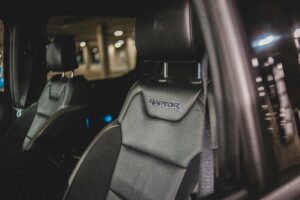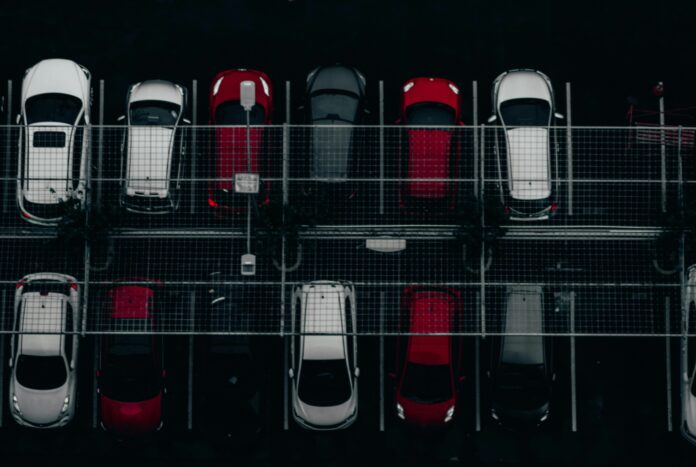The vehicles of the future, specifically 2025, will be a perfect combo of modern technology, eco-friendliness, and custom-made solutions. The car sector is expanding the limits of creativity in various aspects: electric power taking the lead, machine intelligence features, and regular user-friendliness. A grasp of the term “modern car 2025” is necessary no matter if you’re a buyer looking for a fresh ride or simply a trend watcher.
The Rise of Electrification
Electric vehicles (EVs) are no longer 0.8% of total car sales—they have made it to 30% of total car sales, getting close to that of internal combustion engines (ICEs).
Longer Range and Faster Charging
Battery technology has really improved, and now it is possible to go from 400 to 600 miles on a single charge if the car is one of the new models. In addition, ultra-fast charging stations are located on highways, becoming a common sight, and they can recharge the battery almost completely in less than 20 minutes.
Flexible Power Options
The plug-in hybrid models are still popular among the public, and it is the only way for the drivers to get electric mileage without fully quitting the fuel.
Autonomous and Semi-Autonomous Driving
The self-driving technology has made a rapid progression to a point where it has not merely come to the point where it is limited to lane assistance and cruise control.
Level 3 Autonomy Goes Mainstream
In fact, many of the cars produced in 2025 will have the feature of driving without hands under certain conditions. These cars will be able to detect their surrounding environment, navigate through lanes, and decelerate when necessary, all without the driver’s input. However, the presence of a human is still required by law in most regions.
Smarter Safety Tech
AI and predictive analytics are the ones that the advanced driver-assistance systems (ADAS) are relying on now. The standard safety features on most mid-range models include collision prevention, pedestrian detection, blind-spot alerts, and real-time traffic response.
In-Car AI and Personalization
Cars are getting more and more like digital companions and less like machines that just transport people.
Voice Assistants and Predictive Features
The AI assistants are the ones—and they are the ones adjusting music, lighting, climate, and seat settings—who are doing the adjusting based on the driver’s habits. Also, instead of tapping screens, drivers can control most features by voice.
Custom Comfort and Cabin Atmosphere
Cabin personalization has developed to such an extent that it is hard to imagine. Drivers can tailor the whole driving environment from adjustable LED lighting and luxurious seating to fragrance systems. However, many still opt for traditional methods such as a car air freshener to keep the interior smelling fresh and clean without relying on built-in systems.
Advanced Infotainment and Connectivity
Contemporary cars are technology devices that can perform basic home and office functions.
Seamless Device Integration
The feature set that the car uses via smartphone includes Apple CarPlay and Android Auto but also the built-in mobile app for navigation, entertainment, and productivity. Cars can even coordinate calendars and propose routes based on your plan.
5G-Enabled Vehicles
In the 5G era, the digital maps are showing the latest situation, the cathode ray tube for cartoon watching is without lagging, and the back-and-forth communication between cars is helping the roads be safer and their flow improved.
Sustainability Beyond the Engine
The eco-conscious materials and energy-saving techniques beyond the engine are the characteristics of 2025 car manufacturing.
Recycled and Plant-Based Interiors
Luxury leather is the target of extinction in favor of recycled fabrics, vegan leather, and biodegradable composites, while the rest of the plastics are to be replaced by the latter.
Cleaner Supply Chains
The commitment of factories to wind and solar energy is growing, and the battery recycling plans of electric vehicles are minimizing waste as well as dependence on raw lithium.
Design Trends Shaping Modern Vehicles
The visual aspect of current automobiles serves as a mirror to their cutting-edge technology.
Aerodynamic Bodywork
Streamlined silhouettes cut through the air more quickly, thus making the vehicles more efficient and powerful. Manufacturers are coming up with smooth lines, concealed handles, and elegant light profiles.
Smarter Lighting
The headlights using LED and laser technologies change their modes according to the presence of other vehicles, weather, and the speed of driving. The interior illumination can be adjusted according to personal preference—it’s usually for creating ambience, concentrating, or providing comfort during night driving.
Performance and Driving Experience
Modern cars offer power and precision with such practices that earlier generations couldn’t do.
Electric Torque and Acceleration
Today, electric cars beat the majority of the traditional sports cars in speed and other parameters. The instant torque is driving the fastest acceleration not only in luxury but also in the everyday models.
Interior Upgrades and Driver Comfort
Cabin design has shifted toward minimalism, wellness, and smart efficiency.

Ergonomic Seats and Wellness Features
Massage seats, posture support, climate-zoned areas, and temperature-reactive materials keep drivers comfortable on long commutes.
Odor and Clean Air Management
Air filtration and ionizing systems reduce pollution and allergens inside the vehicle. Still, many drivers rely on a stylish car air freshener to personalize scent and enhance cabin freshness at a low cost.
Subscription Models and Software-Based Features
Ownership has become a lot more than just the car and its accessories.
Pay-As-You-Go Vehicle Features
Customers of these types of cars will be able to select from a list of software features that can be upgraded, such as heated seats, custom lighting modes, and boost performance packages, for which they can pay on a monthly basis or one-time fee to get unlocked.
Over-the-Air Updates
Just like a smartphone, you won’t have to visit the dealership for getting upgrades, maps, app improvements, or performance tweaks; your car will automatically download them all as if it were a smartphone.
Safety Reimagined
Nowadays, safety is more than just airbags.
Predictive AI Monitoring
AI monitors not only the external risk factors but also the well-being of the driver through his/her facial expressions. By using face recognition and sensor data, the system can determine whether the driver is sleepy or distracted and send alerts or engage the autopilot mode.
Smart Emergency Response
The vehicle can automatically call for the ambulances and at the same time inform them about the condition of the injured people through the sensors inside the car, which are integrated with the health monitoring system.
Shared Mobility Models
The trend of car ownership is changing, and there are more options for usage flexibility.
Car Sharing and On-Demand Access
More subscription-based access, where drivers are able to use cars without having any ownership, is being witnessed in urban areas. Through applications, users are charged according to the number of hours, days, or miles they have consumed.
Reduced Ownership Costs
Shared mobility means less insurance, maintenance, and parking costs. This especially appeals to young urbanites.
The Future of Fueling Infrastructure
A range of supporting elements is making the transformation to cleaner and smarter driving possible.
National EV Charging Networks
Governments, in collaboration with private companies, continue to increase the places where charging is available, such as in parking structures, highway stops, and residential areas.
Home-Based Charging Systems
Home charging unit installation takes a shorter time than before and costs less, and many come with solar options that allow for near-zero-emission charging of the home.
Insurance and Legal Shifts
Policies are catching up to the new automotive reality.
Usage-Based Insurance
Driving data from connected vehicles influences insurance rates. Safer drivers pay less, and real-time monitoring reduces fraudulent claims.
Regulations for Automation
Governments are drafting guidelines around autonomous operation, liability, and cybersecurity requirements for connected vehicles.

Cybersecurity in Connected Cars
The vehicles that are connected to the network bring about new weaknesses, which are to be dealt with.
Built-In Protection Systems
The manufacturers are incorporating firewalls, encryption tools, and access management in order to stop hacks from happening.
Regular Security Patches
Just like smartphones, the cars have become dependent on continuous security updates to protect the driving data and the onboard functions. For more information visit this website https://www.magazineustad.com/

